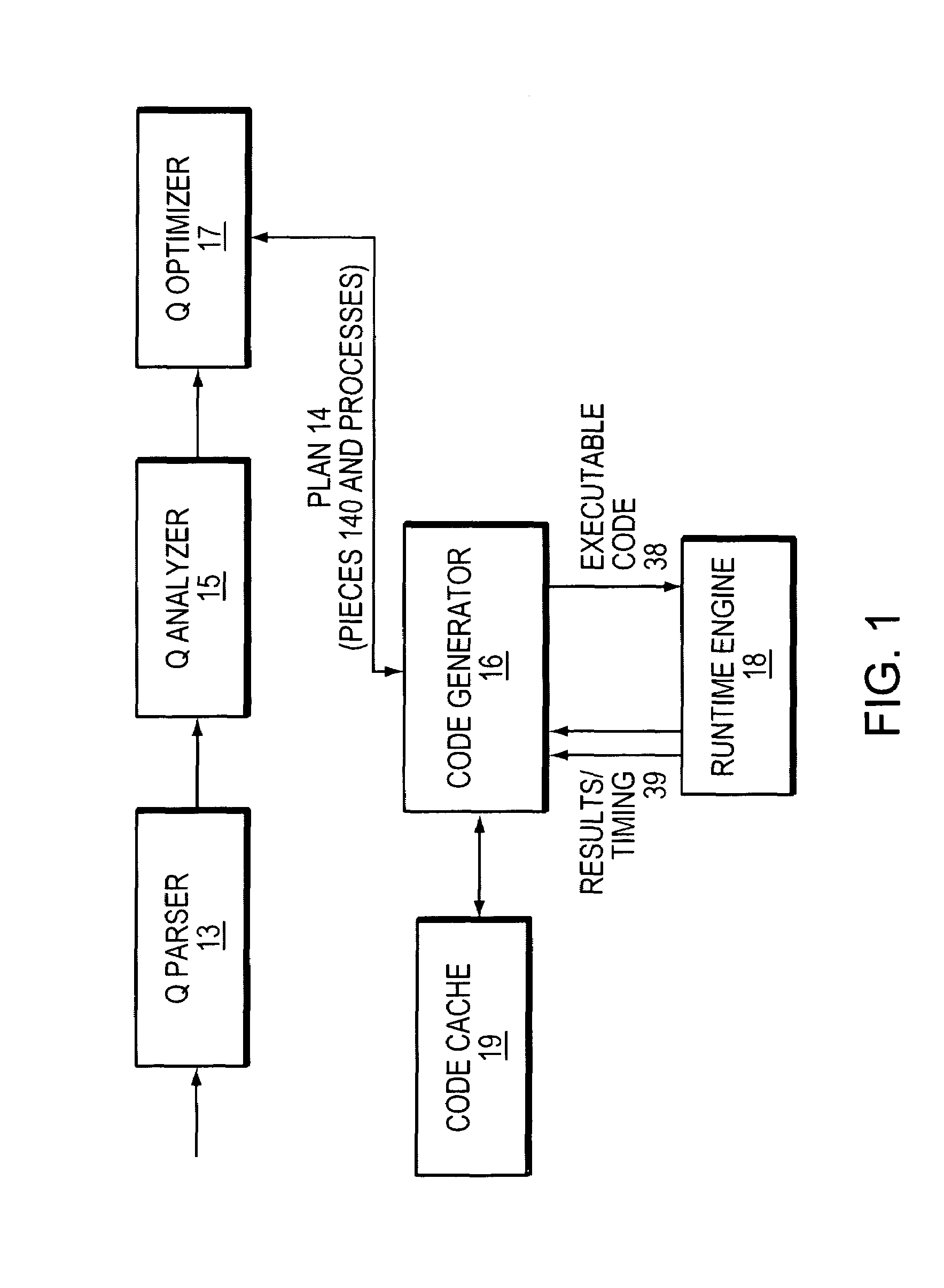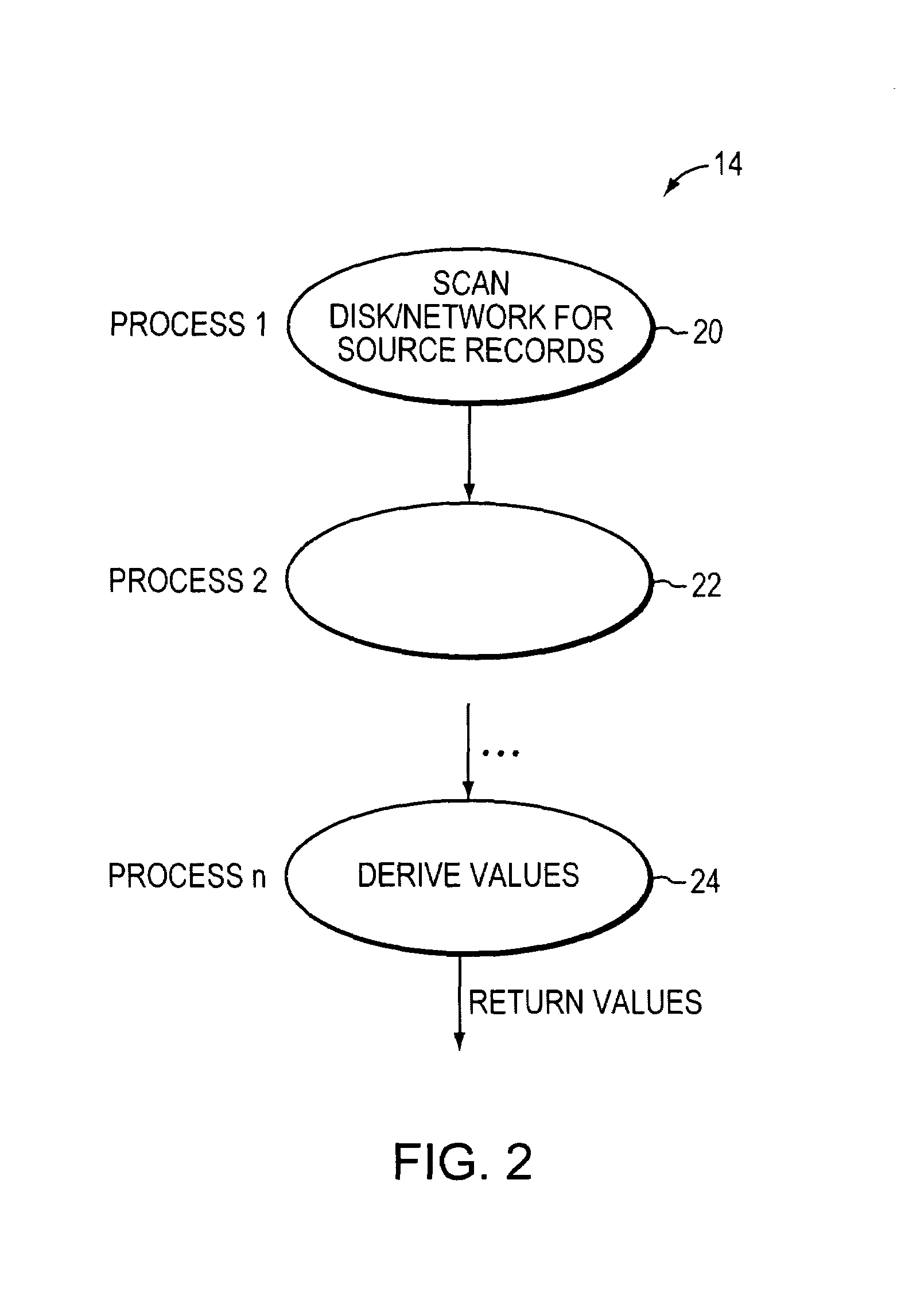SQL code generation for heterogeneous environment
a technology of heterogeneous environment and sql code, applied in the field of sql code generation for heterogeneous environment, to achieve the effect of avoiding the overhead of materialization memory allocation and copying, and improving performan
- Summary
- Abstract
- Description
- Claims
- Application Information
AI Technical Summary
Benefits of technology
Problems solved by technology
Method used
Image
Examples
example
[0161]The following SQL Statements create and populate a table:
[0162]create table ps (n numeric(20,2) not null, m numeric(20,4) not null);
[0163]insert into ps values (25.10, 130.3000);
And this statement retrieves a computed value from the table:
[0164]select (n+m)+2*(n+m) from ps;
The two columns, n and m, have declared precisions of 20 decimal digits and are stored by the invention as 128-bit values. So, a C++ code fragment showing the record layout would be:
[0165]
/ / Input data record structure.struct TScan 0 {CNumeric128 f1; / / column nCNumeric 128 f2; / / column m};
But, by virtue of the invention's tracking of actual column values, one knows that the data in column n requires only 4 decimal digits, and column m only 7 decimal digits. So, this is a good example to show the advantage of the invention.
First, let's look at some C++ code fragments in the absence of this feature of the invention:
[0166]
/ / Select result row, with wide 128-bit result column f0.struct TReturn 3 {CNumeric128 f0;...
PUM
 Login to View More
Login to View More Abstract
Description
Claims
Application Information
 Login to View More
Login to View More - R&D
- Intellectual Property
- Life Sciences
- Materials
- Tech Scout
- Unparalleled Data Quality
- Higher Quality Content
- 60% Fewer Hallucinations
Browse by: Latest US Patents, China's latest patents, Technical Efficacy Thesaurus, Application Domain, Technology Topic, Popular Technical Reports.
© 2025 PatSnap. All rights reserved.Legal|Privacy policy|Modern Slavery Act Transparency Statement|Sitemap|About US| Contact US: help@patsnap.com



